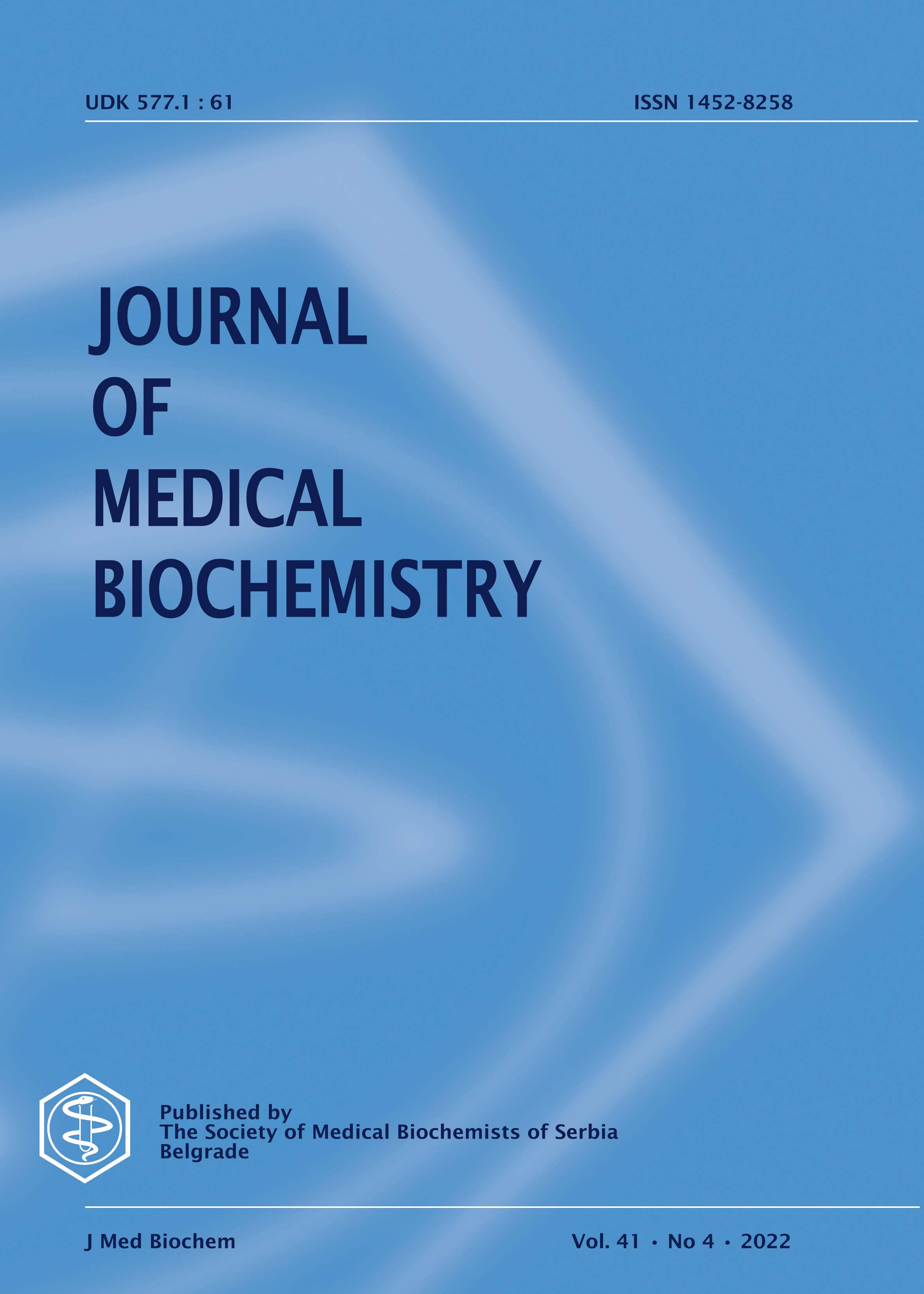Effects of ultrasound-guided lumbar-sciatic nerve block and epidural anesthesia on the levels of IL-6, IL-8, TNF-α and coagulation factors in peripheral blood of elderly patients after hip joint surgery
Abstract
Objective: To investigate the effects of different anesthesia methods on the levels of inflammatory and coagulation factors in the peripheral blood of elderly patients undergoing hip surgery.
Methods: 144 elderly patients undergoing hip arthroplasty in our hospital were randomly divided into ultrasound-guided lumbar-sciatic nerve block (group A) and epidural anesthesia (group B), 72 cases in each group. The postoperative hemodynamic indexes, pain score, inflammatory factors and coagulation factor levels were compared between the two groups.
Results: (1) The postoperative VAS score of group B patients was lower than that of group A (P<0.05); (2) The SBP and DBP of group B were higher than those of group A at T1 and T2. (both P<0.05); (3) Compared with group A, the levels of IL-6, IL-8 and TNF-α in the peripheral blood of patients in group B decreased at postoperative T2, T3 and T4 (P<0.05); (4) Compared with group A, plasma FV:C, FVIII:C and FIB in group B decreased, and TT increased during surgery after T2, T3 and T4, (all P<0.05).
Conclusion: Compared with epidural anesthesia, lumbar-sciatic nerve block can reduce the levels of peripheral blood coagulation factors and inflammatory factors after surgery.
References
[2] Ferrata P, Carta S, Fortina M, et al. Painful hip arthroplasty: definition[J]. Clin Cases Miner Bone Metab, 2011, 8: 19-22.
[3] Merola M and Affatato S. Materials for Hip Prostheses: A Review of Wear and Loading Considerations. Materials (Basel) 2019; 12:
[4] Lin HS, McBride RL and Hubbard RE. Frailty and anesthesia - risks during and post-surgery. Local Reg Anesth 2018; 11: 61-73.
[5] Str?M C, Rasmussen LS and Sieber FE. Should general anaesthesia be avoided in the elderly? Anaesthesia 2013; 69: 35-44.
[6] Shanthanna H, Huilgol M, Manivackam VK and Maniar A. Comparative study of ultrasound-guided continuous femoral nerve blockade with continuous epidural analgesia for pain relief following total knee replacement. Indian J Anaesth 2012; 56: 270-275.
[7] Dones I, Messina G, Nazzi V and Franzini A. A modified visual analogue scale for the assessment of chronic pain. Neurol Sci 2011; 32: 731-733.
[8] Agarwal A and Kishore K. Complications And Controversies Of Regional Anaesthesia: A Review. Indian Journal of Anaesthesia 2009; 53: 543-553.
[9] Imbelloni LE, Gouveia MA and Cordeiro JA. Continuous spinal anesthesia versus combined spinal epidural block for major orthopedic surgery: prospective randomized study. Sao Paulo Med J 2009; 127: 7-11.
[10] Hopkins PM. Ultrasound guidance as a gold standard in regional anaesthesia. Br J Anaesth 2007; 98: 299-301.
[11] Adali S, Erkalp K, Erden V, Comlekci M, Bulbul M and Aldemir T. Spinal anesthesia and combined sciatic nerve/lumbar plexus block techniques in lower extremity orthopedic surgery. Acta Orthop Traumatol Turc 2011; 45: 225-232.
[12] Palta S, Saroa R and Palta A. Overview of the coagulation system. Indian J Anaesth 2014; 58: 515-523.
[13] Smith SA, Travers RJ and Morrissey JH. How it all starts: Initiation of the clotting cascade. Critical Reviews in Biochemistry & Molecular Biology 2015; 50: 326.
[14] Kettner SC, Willschke H and Marhofer P. Does regional anaesthesia really improve outcome? British Journal of Anaesthesia 2011; 107: i90–i95.
[15] Hayward CP, Moffat KA and Liu Y. Laboratory investigations for bleeding disorders. Semin Thromb Hemost 2012; 38: 742-752.
[16] Kawasaki T, Ogata M, Kawasaki C, Okamoto K and Sata T. Effects of epidural anaesthesia on surgical stress-induced immunosuppression during upper abdominal surgery. Br J Anaesth 2007; 98: 196-203.
[17] Chloropoulou P, Iatrou C, Vogiatzaki T, Kotsianidis I, Trypsianis G, Tsigalou C, Paschalidou E, Kazakos K, Touloupidis S and Simopoulos K. Epidural anesthesia followed by epidural analgesia produces less inflammatory response than spinal anesthesia followed by intravenous morphine analgesia in patients with total knee arthroplasty. Med Sci Monit 2013; 19: 73-80.
[18] Sun HZ, Song YL and Wang XY. Effects of Different Anesthetic Methods on Cellular Immune and Neuroendocrine Functions in Patients With Hepatocellular Carcinoma Before and After Surgery. J Clin Lab Anal 2016; 30: 1175-1182.
[19] Conrick-Martin I, Kell MR and Buggy DJ. Meta-analysis of the effect of central neuraxial regional anesthesia compared with general anesthesia on postoperative natural killer T lymphocyte function. J Clin Anesth 2012; 24: 3-7.
[20] Ahlers O, Nachtigall I, Lenze J, Goldmann A, Schulte E, Hohne C, Fritz G and Keh D. Intraoperative thoracic epidural anaesthesia attenuates stress-induced immunosuppression in patients undergoing major abdominal surgery. Br J Anaesth 2008; 101: 781-787.
Copyright (c) 2022 Xingjun Ma, Huijuan Chen, Shuangshuang Guan, Qiufeng Wang, Ning Cai

This work is licensed under a Creative Commons Attribution 4.0 International License.
The published articles will be distributed under the Creative Commons Attribution 4.0 International License (CC BY). It is allowed to copy and redistribute the material in any medium or format, and remix, transform, and build upon it for any purpose, even commercially, as long as appropriate credit is given to the original author(s), a link to the license is provided and it is indicated if changes were made. Users are required to provide full bibliographic description of the original publication (authors, article title, journal title, volume, issue, pages), as well as its DOI code. In electronic publishing, users are also required to link the content with both the original article published in Journal of Medical Biochemistry and the licence used.
Authors are able to enter into separate, additional contractual arrangements for the non-exclusive distribution of the journal's published version of the work (e.g., post it to an institutional repository or publish it in a book), with an acknowledgement of its initial publication in this journal.

